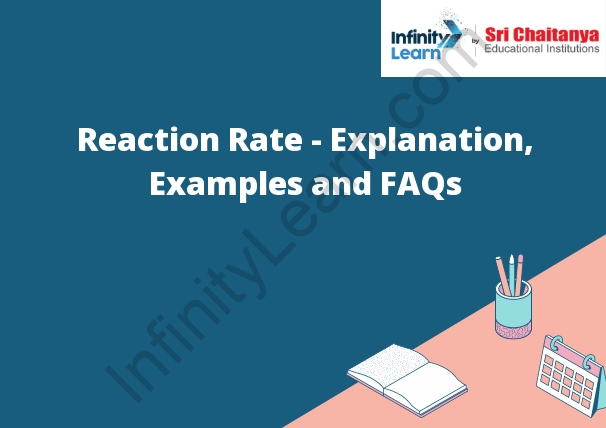Table of Contents
Do You Know What is Rate of Reaction?
A rate of reaction is how quickly or slowly a chemical reaction takes place. This can be measured in a number of ways, including the amount of product formed over time, the amount of reactants used up over time, or the change in temperature over time. The rate of reaction can be affected by a number of factors, including the temperature, the concentration of the reactants, the presence of a catalyst, and the physical state of the reactants.
Factors Affecting Rate of Reaction-
The rate of a chemical reaction is determined by the activation energy of the reaction and the number of collisions that occur between the reactant molecules. The rate of a reaction can be increased by increasing the temperature of the reaction, by adding a catalyst, or by increasing the concentration of the reactants.
Collision Theory
The rate of reaction is the speed at which a chemical reaction occurs. It is determined by the frequency of collisions between the reacting molecules. The collision theory states that the rate of reaction is determined by the frequency of collisions between the reacting molecules. The rate of reaction increases as the number of collisions increases.
The rate of reaction is affected by several factors including the concentration of the reactants, the temperature, the surface area of the reactants and the presence of a catalyst.

1. Concentration of Reactant
The concentration of a reactant is the amount of that reactant present in a given quantity of solution. The concentration of a reactant can be expressed in a number of ways, including molarity, molality, and mole fraction.
2. Molarity
Molarity (M) is a measure of the concentration of a chemical species in a solution, specifically the number of moles of that species per liter of solution. It is expressed as the symbol M. Molarity is calculated by dividing the number of moles of a particular species in a solution by the liters of solution.
3. Molality
Molality (m) is a measure of the concentration of a chemical species in a solution, specifically the number of moles of that species per kilogram of solvent. It is expressed as the symbol m. Molality is calculated by dividing the number of moles of a particular species in a solution by the kilograms of solvent.
4. Mole Fraction
The mole fraction (x) is a measure of the concentration of a chemical species in a solution, specifically the number of moles of that species divided by the total number of moles of all species in the solution. It is expressed as the symbol x. Mole fraction is calculated by dividing the number of moles of a particular species in a solution by the total number of moles in the solution.
2. Electromagnetic Radiation
Electromagnetic radiation is a type of energy that travels through the air and is made up of tiny particles called photons. Photons are created when an atom’s electrons move from a higher to a lower energy level.
3. Catalysts
are substances that increase the rate of a chemical reaction without themselves being consumed in the reaction.
Catalysts are substances that speed up chemical reactions without being used up in the process. In fact, catalysts can often be recovered unchanged at the end of a reaction. Catalysts work by providing a surface or intermediate on which the reacting molecules can meet.
4. Isotope
5. Ion
6. Atom
7. Molecule
8. Compound
5. Stirring
Stirring is an effective way to mix ingredients and to help them cook evenly. Stirring also helps to release the flavors of the ingredients.
6. Diffusion
7. Electron
8. Ion
9. Molecule
10. Neutron
7. Temperature
The average temperature in the area during the month of January is about 47 degrees Fahrenheit.
8. Pressure
9. Temperature
10. Density
Average Rate of Reaction
The rate of reaction is the speed at which a chemical reaction takes place. The faster the reaction, the more product is formed in a given time. The average rate of reaction is the rate of reaction averaged over time. This is calculated by dividing the change in concentration of the product by the change in time.
Instantaneous Rate of Reaction
The instantaneous rate of reaction is the rate of reaction at a specific point in time. The instantaneous rate of reaction can be determined experimentally by measuring the change in concentration of a reactant or product over time.









